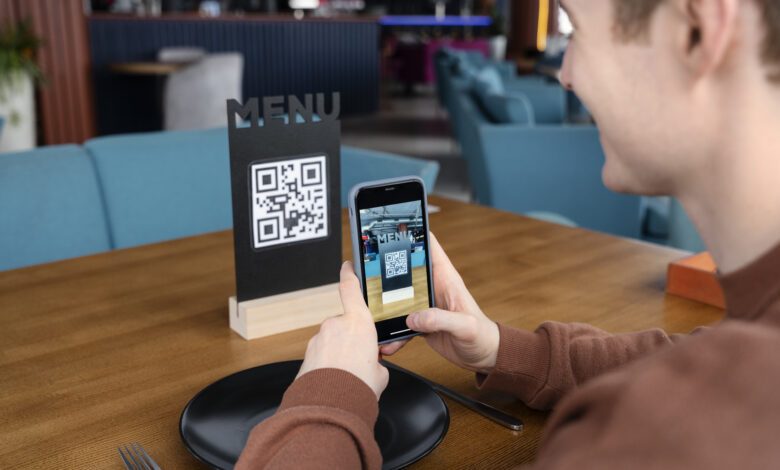self ordering system in thailand – ระบบสั่งออเดอร์สินค้าด้วยตนเองในประเทศไทย

The self ordering system in thailand – ระบบสั่งออเดอร์สินค้าด้วยตนเองในประเทศไทย has revolutionized the way businesses operate and customers interact with services. As Thailand continues to embrace digital transformation, these systems are becoming increasingly common in restaurants, retail stores, and service industries. Offering convenience, efficiency, and personalization, self-ordering systems have proven to be a game-changer for both businesses and consumers.
In this article, we will explore the concept of self-ordering systems, their benefits, the industries utilizing them, and their growing importance in Thailand’s economy.
What Is a Self-Ordering System?
A self-ordering system is a digital solution that enables customers to place orders independently without the need for staff intervention. This system is commonly found in restaurants, cafes, retail outlets, and even public service areas. In Thailand, the self ordering system in thailand – ระบบสั่งออเดอร์สินค้าด้วยตนเองในประเทศไทย is implemented through:
- Self-Ordering Kiosks: Interactive touchscreens located in restaurants or retail stores allow customers to browse menus, select items, and pay directly.
- Mobile Apps: Many businesses have developed mobile applications to enable users to order food, products, or services from the comfort of their homes or on the go.
- QR Code Menus: Popular in cafes and small restaurants, QR codes link customers to digital menus where they can place and customize their orders.
- Self-Checkout Counters: Retail stores use self-service checkout systems to expedite the payment process.
This system empowers customers by giving them control over their ordering experience while streamlining operations for businesses.
The Growing Popularity of Self-Ordering Systems in Thailand
1. Rising Demand for Convenience
Modern consumers prioritize speed and convenience. With the self ordering system in thailand – ระบบสั่งออเดอร์สินค้าด้วยตนเองในประเทศไทย, customers can avoid long queues and enjoy a seamless ordering process.
2. Impact of the COVID-19 Pandemic
The pandemic has pushed businesses to adopt contactless solutions to minimize physical interactions. Self-ordering systems have emerged as a safe and efficient alternative, gaining widespread acceptance among Thai consumers.
3. Technological Advancements
Thailand’s increasing smartphone penetration, along with advancements in software and hardware, has made it easier for businesses to integrate self-ordering systems into their operations.
4. Cost-Efficiency for Businesses
By automating the ordering process, businesses can reduce labor costs and improve efficiency, particularly during peak hours.
Features of Self-Ordering Systems in Thailand
The self ordering system in thailand – ระบบสั่งออเดอร์สินค้าด้วยตนเองในประเทศไทย is equipped with various features designed to enhance the user experience and optimize business operations:
For Customers:
- Intuitive Interfaces: Easy-to-use designs ensure a smooth ordering experience for all age groups.
- Multi-Language Options: Catering to Thailand’s diverse population and tourists, many systems support multiple languages.
- Customization: Customers can personalize their orders, such as choosing ingredients, adjusting portion sizes, or modifying product preferences.
- Cashless Payments: Integration with payment platforms like PromptPay, credit cards, and e-wallets makes transactions quick and hassle-free.
For Businesses:
- Data Collection: These systems collect valuable data on customer preferences, helping businesses make data-driven decisions.
- Upselling Opportunities: Automated recommendations for add-ons or combo deals boost revenue.
- Real-Time Updates: Orders are sent directly to the kitchen or inventory systems, reducing errors and delays.

Benefits of the Self-Ordering System in Thailand
For Customers:
- Faster Service: No need to wait for staff to take orders, reducing waiting times.
- Contactless Transactions: Safer interactions, especially in a post-pandemic world.
- Enhanced Customization: Customers can modify their orders precisely to match their preferences.
For Businesses:
- Operational Efficiency: Employees can focus on preparing orders rather than taking them, improving overall productivity.
- Cost Savings: Automation reduces the need for additional staff during busy hours.
- Improved Accuracy: Minimizing human error ensures that orders are processed correctly.
- Higher Sales: Features like promotional displays and recommended pairings increase the average transaction value.
Industries Adopting Self-Ordering Systems
1. Food and Beverage
Restaurants like McDonald’s and KFC in Thailand have adopted self-ordering kiosks to expedite the ordering process. Smaller eateries are using QR codes to connect customers with digital menus.
2. Retail Stores
Supermarkets and convenience stores like Big C and 7-Eleven have implemented self-checkout counters to reduce checkout times and improve customer flow.
3. Hotels and Resorts
Self-ordering systems for room service or concierge services are increasingly popular in Thailand’s hospitality sector.
4. Public Services
Government offices and transportation hubs have started using self-ordering kiosks for ticketing and information services.
Challenges of Implementing Self-Ordering Systems
Despite their numerous advantages, self-ordering systems in Thailand face some challenges:
- High Initial Investment: Setting up self-ordering kiosks and integrating software can be costly for small businesses.
- Technical Issues: Connectivity problems or system malfunctions can disrupt operations.
- User Resistance: Older generations or those unfamiliar with technology may prefer traditional ordering methods.
- Cybersecurity Concerns: Businesses must ensure robust data protection measures to safeguard customer information.
The Future of the Self-Ordering System in Thailand
As Thailand embraces digitalization, the self ordering system in thailand – ระบบสั่งออเดอร์สินค้าด้วยตนเองในประเทศไทย will continue to evolve. Emerging trends include:
- AI Integration: Artificial intelligence can analyze customer behavior to offer personalized recommendations.
- Voice-Activated Systems: Voice command features will make ordering even more accessible.
- Augmented Reality (AR): Customers may soon use AR to visualize products or meals before ordering.
- Blockchain for Payments: Secure and transparent transactions powered by blockchain technology could further enhance customer trust.
Conclusion
The self ordering system in thailand – ระบบสั่งออเดอร์สินค้าด้วยตนเองในประเทศไทย is redefining the way businesses interact with their customers. Offering unmatched convenience, speed, and accuracy, these systems benefit both consumers and service providers.
With continued advancements in technology and a growing demand for efficiency, self-ordering systems are poised to become a staple in Thailand’s retail and service industries. For businesses looking to stay competitive, adopting a self-ordering system is no longer a luxury but a necessity.
By embracing this digital transformation, Thailand is setting an example for other countries to follow, ensuring that both businesses and consumers thrive in an increasingly automated world.





